Describe How Use Cases Guide Specification Elaboration and Software Development
Describe the sequence of events for each use case. The most important skill in OOAD is assigning responsibilities to objects 5.
Write most of the use cases and their descriptions in detail through a series of team meetings.
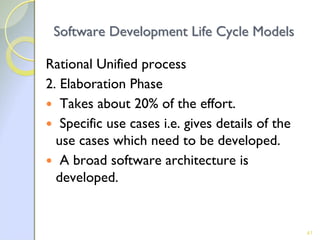
. Use case analysis is a simple yet powerful method to specify and analyze business processes and work procedures. A user story is the title of one scenario whereas a use case contains multiple scenarios describe and illustrate the relationship. Describe in which situations your team will use the SRS.
Usually these are product owners investors business analysts developers sometimes testers and operation teams. Chernak 2012 reports that there are three main forms of requirements documentation in the IT industry. It is important to use a USE Case because it easily outlines all that is needed for a particular process to succeed and also outlines all the people involved in it.
Describe and illustrate the documentation text for a Use Case. An approach based on use case fragments Elaboration of use case specifications. The RUP is an agile iterative process for developing software products.
Each interaction is a use case. In the elaboration process it takes the requirements that have been stated and gathered in the first two phases and refines them. An approach based on use case fragments Use case description has gained a wide acceptance among the many techniques available for.
An approach based on Use Case Fragments F. Specify a Use Case Diagram. Developing a Use Case When developing use cases you should start with a functional partitiona listing of the major functional categories of the application.
A technique to lessen the relationships number of functionalities amount of interactions and so. Be able to specify a brief scenario for a system Use Cases Describe and illustrate the purpose of a. A USE Case defines what needs to happen upon a particular action in order for that action to be completed successfully.
Describe your products end users. Most actors goals and use cases named most use cases written in brief format. Elaborating the process and infrastructure.
Elaboration of use case specifications. Write use cases to capture requirements. Usually its used in the following cases.
Describe and use the use case relationships includes uses and extends includes points to a behavior that is always used in the main flow an relationship represents behavior that is factored out of the use case. 2008-03-16 000000 Elaboration of Use Case Specifications. Focus on one of these users.
The full structure depends on your software development methodology and the teams structure. Table of Contents Show. The actor can be a human an external system or time.
Elaborating the vision. Include interesting plot points that help us envision important aspects of the system a scenario can gloss over uninteresting details the differences are not well-defined however reasonable differences are. Post-conditions the conditions that must hold once the use case has completed.
This is the third phase of the requirements analysis process. Expansion and looking into it further are done as well. Pre-conditions the conditions that must hold for the use case to begin.
It will serve as a master inventory to help writ effective use cases for the requirements phase of the project. This activity involves establishing a high-fidelity understanding of the critical use cases that drive architectural or planning decisions. Large systems require software engineers to consider many aspects of development including.
Problem and design decomposition technology and tool considerations and process and methodology. The traditional RE 48 the one directed by use cases 28 the agile methods 11 and other approaches that represent 13. In software and systems engineering a use case is a list of actions or event steps typically defining the interactions between a role known in the Unified Modeling Language as an actor and a system to achieve a goal.
Break this users interactions down into use cases. Design patterns are named problem-solution formulas. User stores are a concise 1 sentence use case summaries.
Use Cases Describe and illustrate the purpose of a. A UML use case diagram is the primary form of systemsoftware requirements for a new software program underdeveloped. In this course elaboration entails the first 3 of these activities.
A typical use case description may include the following. Rank the use cases as a function of their risk and criticality. Use cases once specified can be denoted both textual and visual representation ie.
The direction of an. Request PDF Elaboration of use case specifications. The data shows that the traditional RE corresponds to the principal form of requirements documentation.
Use cases specify the expected behavior what and not the exact method of making it happen how. Primary flow the most. Write a detailed description of the users actions and how the system should respond.
Here are steps you can follow to write a use case. Identify who is going. This use case index should be used by the project team to define the use cases against.
Select the highest rank use cases attempting to ensure that the set chosen covers the core architecture. Given a context diagram describe the interactions between the system and its context. Use Case Use Case Diagram.
An approach based on use case fragments Dias F. An represents behavior that is factored out for reuse not because it is an exception. Use case is a collection of one or more scenarios -main flows alternative scenarios describe some benefits that are derived directly from using use cases they have more contextdetails of what the interaction between the system and user would be describe how use cases guide specification elaboration and software development what is traceability.
This will help identify what areas need to be focused on. 10 - 20 of the use cases are written in fully dressed detail to improve understanding of the scope and complexity most influential and risky quality requirements identified version one of the Vision and Supplementary Specification written risk list. Identify the Key Components of Your Use Case The actual use case is a textual representation illustrating a sequence of events.
This phase is the result of the inception and elicitation phase.
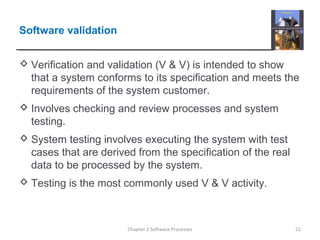
Ian Sommerville Software Engineering 9th Edition Ch2
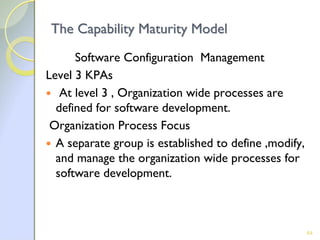
Software Development Techniques
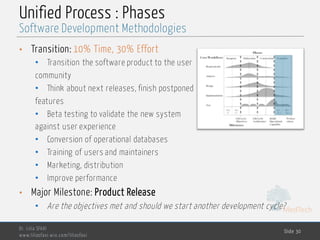
Software Engineering Chp1 Software Dev Methodologies
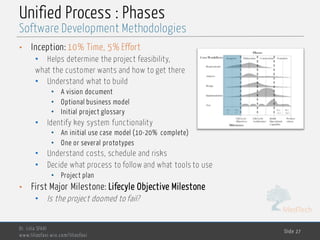
Software Engineering Chp1 Software Dev Methodologies
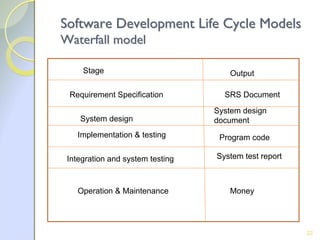
Software Development Techniques
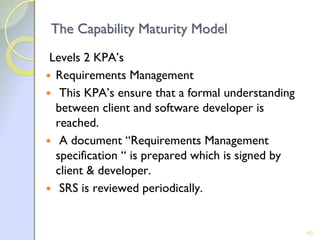
Software Development Techniques
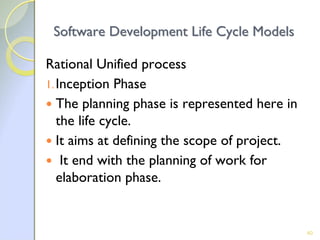
Software Development Techniques
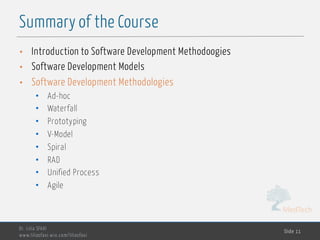
Software Engineering Chp1 Software Dev Methodologies

Pdf Inspection Of Software Requirements Specification Documents A Pilot Study

Software Engineering Chp1 Software Dev Methodologies
Generic Process Model Framework Activity Task Set Process Patterns Principles Of Software Engineering Teachics
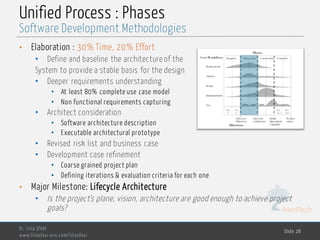
Software Engineering Chp1 Software Dev Methodologies

Software Development Techniques
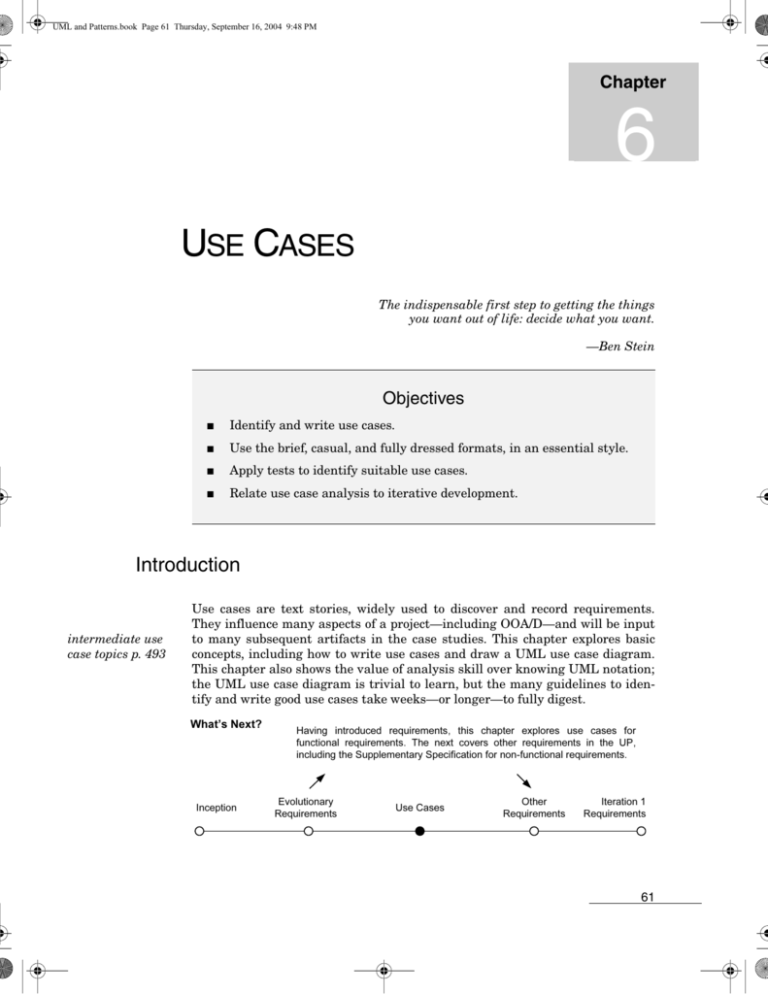
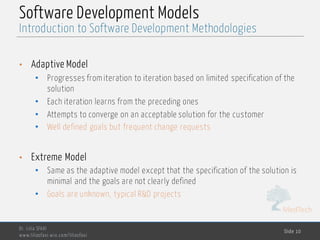
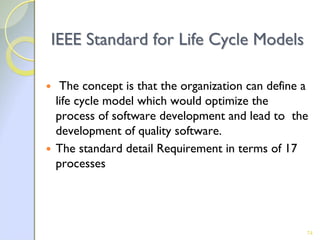
Comments
Post a Comment